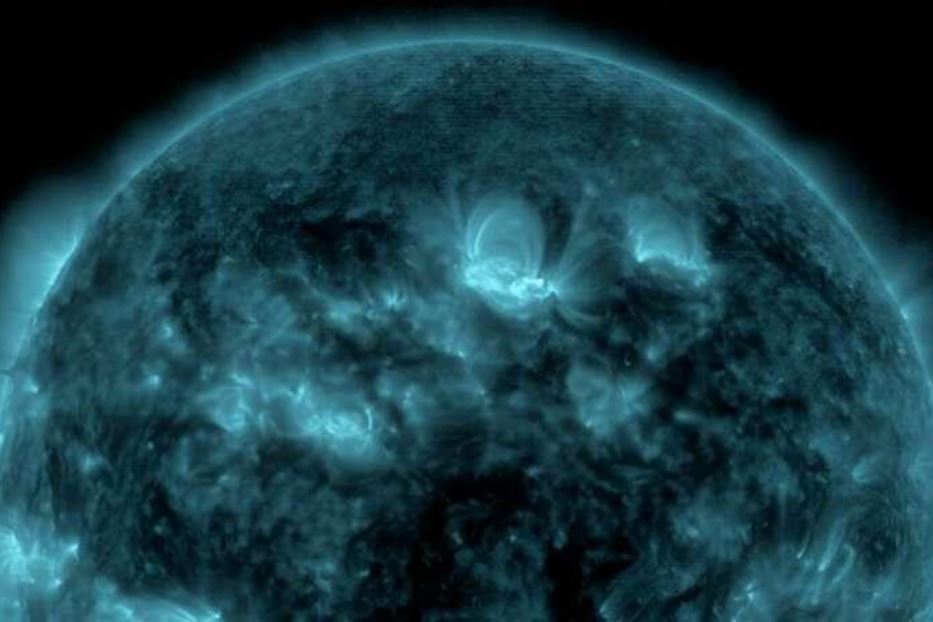A cluster of sunspots as wide as 16 Earths (see image below) has caused at least five eruptions of magnetic fields and solar plasma, many of which could merge to create a “cannibalistic” solar storm in Earth’s atmosphere today. NOAA classifies solar storms on a five-point scale, where G4 represents “severe” ones and ongoing ones are G4. Severe solar storms can cause voltage surges in the power grid and affect satellite and high-frequency radio communications. Operators in these industries, however, have adaptations to protect their equipment during these storms. These protections may include backup systems and radiation shielding, as well as temporary changes in operations. However, the potential new storm could make itself known to the public through colored auroras (as already happened this night between Friday and Saturday) which would also be visible at our latitudes. We expect to see this activity persist through Sunday.
Image from “Scientific”
The cause of all this is a region of very strong magnetic fields that underlies the sunspot cluster. There’s this stronger, more concentrated magnetic field underneath them that obviously has the potential for stronger solar flares. And this is what happened in this rather large region over the last couple of days.
The sunspot group is similar in size to the one that triggered such an eruption of plasma and magnetic fields, called a coronal mass ejection (CME), which in 1859 caused the Carrington event, the most intense geomagnetic storm ever recorded by the Sun. ‘man. That event interrupted the only mass communication of the time, the telegraph network, and caused global auroras.
However, the current sunspot will not necessarily cause a storm of similar caliber. Since 1996, there have been 141 sunspot clusters as large as or larger than the current one, known as active region 3664 (AR3664). “The CMEs that are heading towards Earth are likely much less massive and less powerful than the large CMEs that caused the Carrington event.” At least some of the CMEs that the sunspot cluster has erupted in recent days will likely merge, creating what is known as a “cannibalistic CME.” These particle-laden bubbles can move away from the Sun at speeds ranging from less than 90,000 kilometers per hour to more than 10 million kilometers per hour. The Earth-Sun distance is 150 million kilometers.
The sunspot cluster rotated into view of Earth a few days ago. At the time, the area looked pretty normal. But then “it exploded into this behemoth.” This “lucky” timing allowed researchers to observe the development of the giant sunspot cluster. Over the next few days, the Sun’s rotation will cause the sunspot group to move away from Earth, so any further CME emitted will head harmlessly into space. However, the stain may reappear. Sunspot clusters of this size often persist for months, and a new rotation of the Sun could bring the behemoth into view of Earth in another two weeks.
The Sun’s activity varies according to an 11-year cycle. The activity of this cycle is expected to peak in 2025. This could be the first major event in a series that we are likely to experience over the next two to three years.
